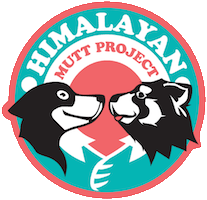Dr. Gim Ng receives the best proposal ever

It was the best proposal I had ever heard, and something I never knew I had been waiting for.
“Would you like to help me with my project in Nepal in May 2018?” - HMP's Debby Ng asked in an email from Singapore, I was based in the UK at that time. I first joined the Himalayan Mutt Project in May 2016, and had been looking forward to going back to Nepal since. This was the perfect opportunity; to be involved in a National Geographic study, get to neuter some dogs, and spend more time in the gorgeous Himalayan mountain region.
Preparations for the trip began in December 2017. First, we conceived the plan to gather data and organise the gear and equipment required for the distemper survey and neutering camp - it's not like we can look for more supplies at a pharmacy once we are up in the mountains! Then, as a volunteer vet, I had to study the Australian Animal Ethics code and take a test as the distemper study was based in an Australian institution. These tasks came at a time when I was juggling work as a locum vet in the UK, but I had no doubt that persevering through all this would be worth it! Just when it seemed like the mountain of work for the insurance, animal ethics, and logistics wasn't ever going to end, it was time to set off on our expedition!
Before the work (and excitement) could begin, we had to get to Manang from Kathmandu! It was a gruelling trip that took over ten hours of travel each day, for two days. As our 4WD emerged from the bamboo forests in the lower Himalayan valley, the journey became well worth every bump as the vast and spectacular mountains rose up into the sky to greet us.

Our first day in the mountains was spent "resting" and becoming acclimatised to the high altitude (3,500 m). By "rest", it just meant that we hadn't yet begun data collection, but there was lots of prep work to be done! We walked around Manang talking to the residents, informing them that we had arrived and that we would begin work the next day. They were to keep their dogs indoors and give us about an hour of their time to answer a questionnaire about how they care for their dogs. A successful distemper survey was going to require massive community involvement, creativity, determination, and all our wit! We were new to collecting data in the field, but the team had great chemistry and we quickly got an efficient system going. Trying to hold a dog down in a cold outdoors with rocks and dust blowing in your face was hard, let alone working on uneven ground! I'm thankful that at least the dogs weren't aggressive!

I was most heartened by the people of Ngawal who took the initiative to get organised in support of our project. The morning we arrived in Ngarwal, we walked out of our guesthouse into a crowd of people with their dogs who were eagerly awaiting us! Local inn-keeper, Chungda didi (above with HMP Team), had helped us spread the word to the entire village though word of mouth. She gave out instructions for residents with dogs to gather outside her inn that morning.
After Jules and I collected the blood from the dogs, dog owners joined Ajay for a chat over some tea and biscuits as he interviewed them about the care they provide for their dogs. This data would help us build our understanding of how human behaviour influences disease transmission between dogs and wildlife. I was marvelled by their sense of community and was truly impressed how effective communication could be even with the lack of communication infrastructure - we had no access to wireless or telecommunication connections while in Ngarwal! We didn't even have power!
We began our sterilisation camp after collecting most of the data we needed from the community dogs. HMP conducted sterilisation camps in Ngarwal in 2014 and 2016, so there were fewer dogs to sterilise this time around. The difficulty we encountered this time around was that the animals we needed to sterilise were females, and most of the stray population was females. In an ideal situation, we would know when the female had her last heat, this would ensure that the surgery would go as smoothly as possible, and with minimal blood loss. As we didn’t know when the dog had its last heat, we ran the risk of the dog losing too much blood during surgery.
Every surgery we did was a challenge, and particular care and attention had to be given to make sure the dogs didn't lose too much blood - working in the field meant that we had limited after care capability. Unlike a situation in a clinic, where an animal can be carefully monitored, kept warm, and given fluids if necessary after surgery; these dogs can only be monitored for a few hours and are returned to their owners who will have no access to a vet if complications arise afterwards. It was definitely stressful working in a different environment without our usual monitoring equipment and drugs. But the team and community supported each other well, and I was glad that the camp was so successful!
I eagerly anticipate returning to the mountains, either for more trekking or projects, and hopefully an opportunity will find me again!























